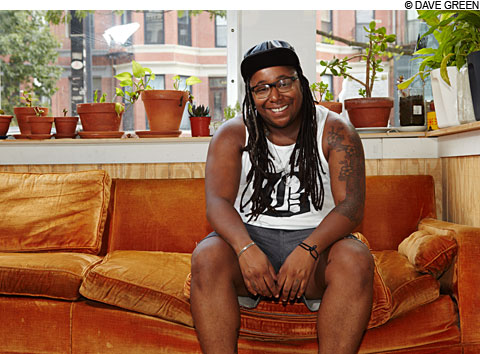It's a story as old as time — well, maybe not as old as time, but it's old: brilliant young artist leaves Boston for greener pastures. The myth has all the markers of a hero's journey: wealth, fame, and creative genius await at the other end of the rainbow, in X city that is not Boston.
But, if artists are leaving in droves, why? Massachusetts consistently ranks in the country's top 10 for arts funding, so why does its capital have a reputation for lacking a contemporary art scene? People have blamed the proximity to New York, and the siren call of that city's international art market. Sometimes, the artists themselves are said to lack "backbone" and a willingness to pitch in and bolster Boston's reputation for artistic innovation. Boston's museums and institutions have even been accused of disloyalty, favoring artists from elsewhere while downplaying or ignoring major local and regional artists.
As it turns out, the reason might be all of the above, cemented by an age-old attitude central to the very culture of Boston itself: a city where philanthropy has historically been dedicated to institutions and fine art, rather than to visual art and artists that push boundaries. A city where the government consistently places value on — and dedicates funding to — historical structures and well-vetted institutions, while few resources go to support artists making contemporary work, or to support a vibrant network of galleries and non-institutional spaces; where developers are allowed to gut artist housing in favor of high-priced condominiums while still selling the area as an arts district.
The answer, in short, might just be that Boston lacks a cultural environment where art-making seems valued.

CULTURAL DISCONNECT "People want to gravitate somwhere where artists are actually supported by the city, or by the idea or the myth of the city, or the imagination of a city," says performance artist and community organizer D'hana Perry. |
GREENER PASTURES
"People want to gravitate somewhere where artists are actually supported by the city, or by the idea or the myth of the city, or the imagination of a city," says D'hana Perry, co-founder of Make/Shift — a community-driven work/exhibition space in the South End. In addition to being a popular DJ-about-town, Perry is a performance artist who incorporates documentary film, and a community organizer who has worked with the Theater Offensive and the Fenway Institute. "Boston is known for the Red Sox, you know? And I don't know that that's very exciting for people who are artists."
Like all professionals, contemporary artists go where they think they can make a living, or at least have an audience for their work, says Boston-born and Cambridge-based painter, installation artist, and author Caleb Neelon. He's shown his work at the Museum of Fine Arts, the Dafen Art Museum of Shenzhen, China, and elsewhere, and has partnered with the governments of Germany, Spain, and Honduras to install public murals. But that doesn't mean Boston is hospitable to his career. "[Boston is] one of the very few major cities in the United States where I can't name a visual artist who sustains themselves solely on the production and sale of their artwork," says Neelon.
But are other pastures really that much greener? In 2002, the Boston Foundation commissioned TDC, a nonprofit management consulting service, to work with local cultural leaders and arts advocates to find out. The 26-page report, published in 2003, looked at how Boston's financial support of the arts and culture sector compared to that of other comparable metropolitan regions across the country. Its findings were disconcerting. The city's cultural facilities, the report found, were too hobbled by inadequate restroom facilities, crumbling roofs, or ancient plumbing to accommodate visitor capacity; financial resources couldn't cover the cost of programming, making it difficult to stay in business; and artists struggled to secure local funding, like grants, that were crucial to creating new work.